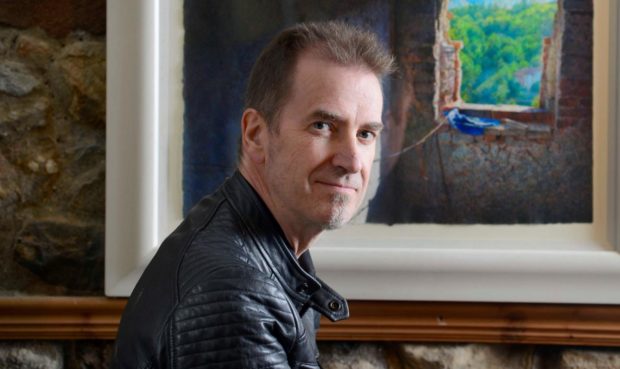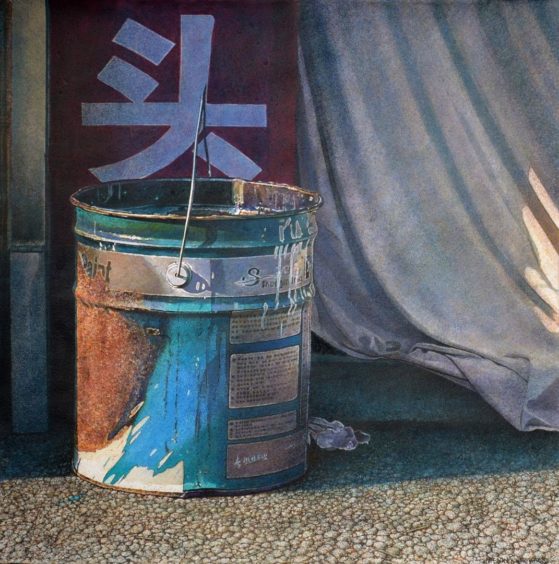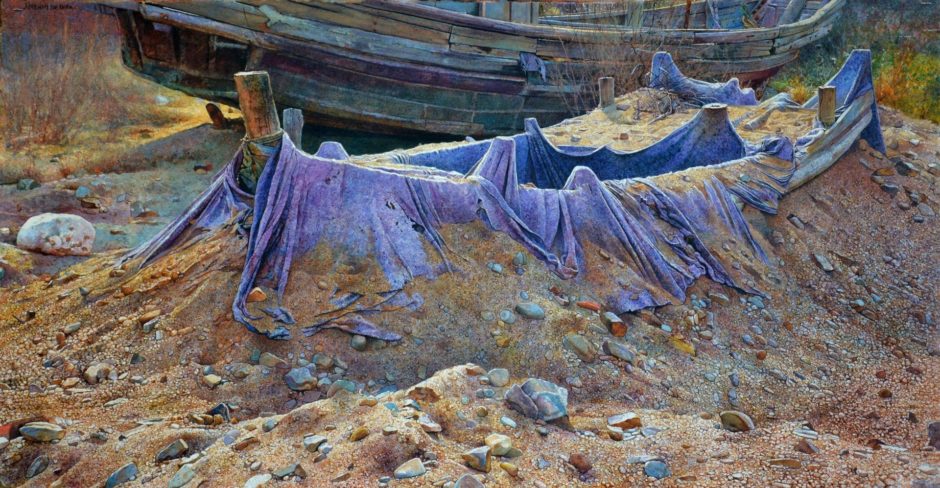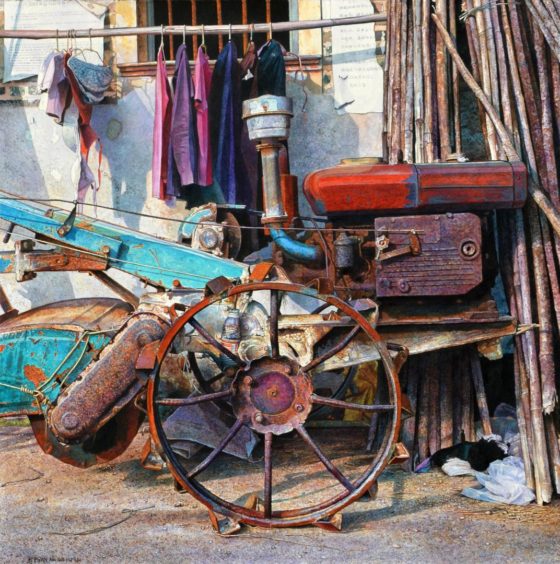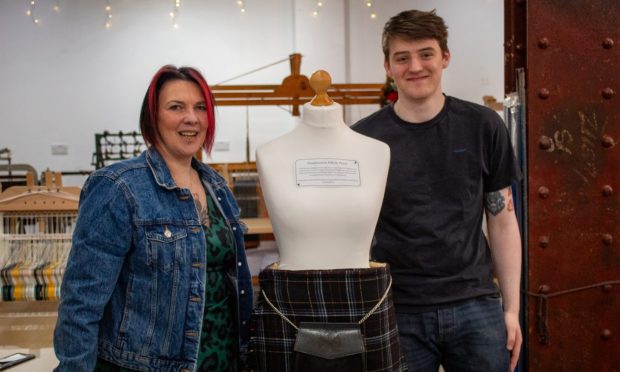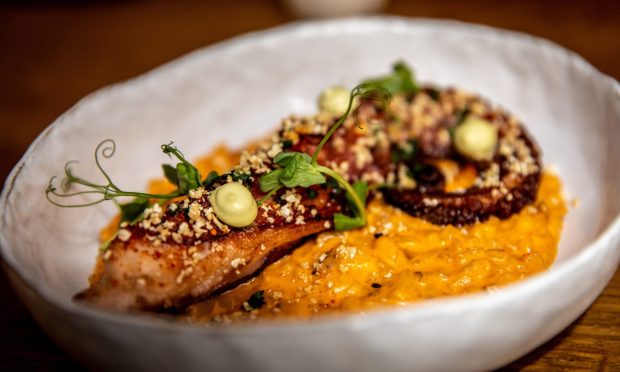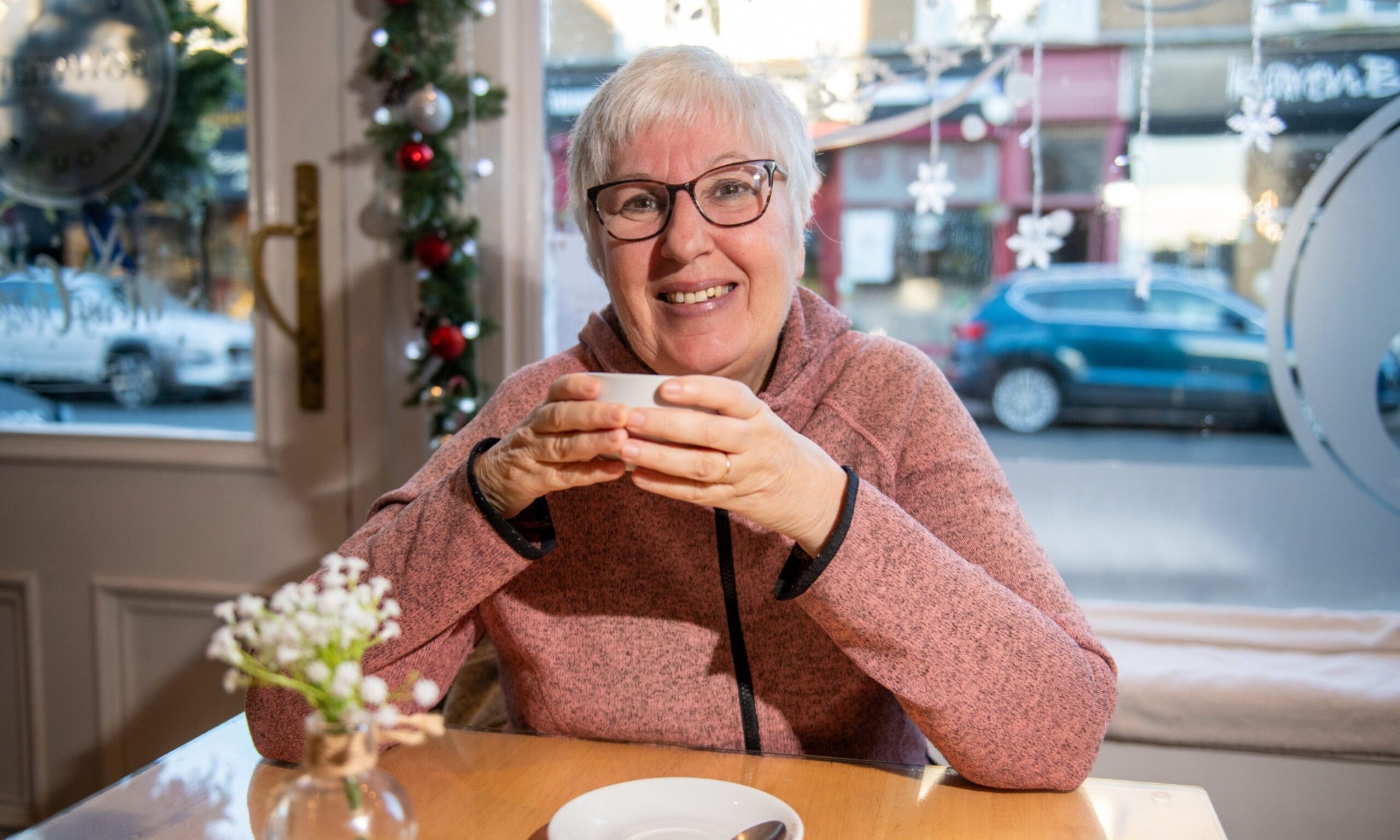It’s often said that one person’s junk is someone else’s treasure. That’s certainly true when it comes to Wormit watercolourist Angus McEwan.
From old doors and railings to walls, weathered posters and discarded, rusty objects, he looks to capture a moment in time that will inevitably change again.
In his Fife studio, Angus creates exquisite, realist and colourful works celebrating these transient, everyday objects.
“It’s just all going back to dust, basically,” he explains. “In the UK and Scotland, quite often I will see a door and think ‘that’s interesting’ and then I will go back the next week and it’s been tidied up and painted – we tend to do that here!
“Whereas, abroad, they are allowed to be like that for years.”
Making a splash
Now Angus has received a prestigious American watercolour prize for his depiction of a rusty paint pot that caught his eye in Shanghai.
His work Paint Splash was selected for the San Diego Watercolour Society’s 40th International Exhibition – held online this year due to Covid-19 – and fought off international competition to win a coveted top ten award. The digital exhibition ran throughout October.
Angus spotted the rusty tin in a doorway last year while in China to be inducted into the International Masters of Watercolour Association.
He says: “On our last day I wanted to go out and see what was around. This paint was just sitting as it is – I didn’t touch it. What I did do was change the ground because it was just tarmac and I didn’t think it was very interesting.
“That blue and the green took my eye and the Chinese character above. The hardest part to paint was the drapery in the right-hand corner because I wanted it to be soft and smooth.”
Prize-winning painter
Born in Dundee, Angus – now 57 – studied at the city’s Duncan of Jordanstone College of Art and Design. He teaches part-time at Dundee and Angus College and exhibits regularly in Scotland and around the world.
One of Scotland’s leading painters in watercolour, he is a member of societies, including the Royal Scottish Society of Painters in Watercolour and the Royal Watercolour Society – the oldest and most prestigious in the world. He has also won numerous prizes for his work in USA, China, Thailand, Greece and Italy.
Angus says watercolour can suffer from an unfavourable reputation – especially in the UK – because it’s seen to be an inferior medium. He believes, in fact, that it’s the most difficult to master.
His technique, however, is somewhat unique: “I don’t use them like traditional watercolours, I can use them really thickly and I print with them and spray them and do all sorts of things.”
He goes on to say that sometime people don’t even believe he works with watercolour when they see his creations.
“People tend to work quite thinly with watercolours and the idea is that the white of the paper shines through and gives it that brightness.
“There are so many different ways you can apply it and there’s also a misconception that you can’t go back over it – but you can wash things out and work into it again.”
Perseverance
Angus can spend weeks adding detail and texture to his works. “It takes a lot of perseverance,” he goes on. “You can use acrylics like watercolour but once they dry, they form a plastic so it’s an impervious surface that when you put water on it, it won’t then dissolve again. When watercolour dries you can put water on it and it will dissolve again and run again.”
Angus paints on handmade paper that is crafted from cotton in the Italian town of Fabriano and tends to be slightly thicker and harder than normal. Over the years he has developed a relationship with the paper makers and staff at the museum in Fabriano and has even been made a freeman of the town.
From weathered surfaces to peeling paint, Angus keeps a lookout for inspiration wherever he may be: “When I first see things, I will try to do a quick sketch – just an impression to embed it in my head. I then take photographs and, if I can, I will go back at different times of the day to see the subject in different lights. Suddenly it could be even more interesting with different light on it.”
“I take multiple images and sometimes I paste them together. It’s not just taking a photo and copying it – it’s getting to know the image. I take the original idea then I explore that.”
